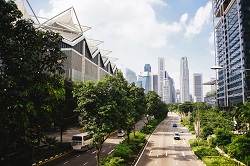Green urban infrastructure for better living
“Urban green infrastructure is a strategically planned network of multifunctional green and blue spaces in urban areas,” notes Professor Stephan Pauleit, GREEN SURGE project coordinator. These spaces include parks, gardens, woodlands, as well as residential and commercial green areas such as green roofs and facades. Health, environment and economy at the community level For maximum benefits at the city-regional level, the strategic planning of green infrastructure should consider the entire urban landscape and be based on multifunctionality and connectivity. The GREEN SURGE initiative was established to identify, develop and test different ways of connecting green spaces, biodiversity, people and the green economy. Specifically, the project worked “to develop innovative approaches and tools for the planning and governance of urban green infrastructure to support uptake and implementation of the EC’s ‘Communication on Green Infrastructure (2013)’,” notes Prof. Pauleit. GREEN SURGE showed that “multifunctional urban green infrastructure can simultaneously promote biodiversity, increase the quality of life for people, and support the economy in intensively used and densely built urban areas,” says Prof. Pauleit. This approach helps to garner political support in decision-making that favours multifunctional urban green infrastructure solutions. Urban green is crucial for sustainable development Project findings have important implications for policymaking. Green infrastructure eases heat stress in the summer, reduces air pollution, and offsets storm water run-off after heavy rainstorms. Beyond these regulating ecosystem services, it can also provide cultural ecosystem services – recreational spaces, areas where people can experience natural and cultural assets and enjoy social interaction. GREEN SURGE further showed that residential property values rise the closer they are to green spaces and that well-maintained green spaces attract business. A survey of over 3 000 people in 5 cities in Europe showed that people prefer biodiverse environments to grey, species-poor open spaces. There is also sound evidence of the health benefits. “First graders in Berlin living in environments well equipped with green were on average healthier and more advanced in their senso-motoric development than those with poor access to green,” Prof. Pauleit points out. Good practices for good living Project work included close interaction with professionals in Urban Learning Labs in Bari, Berlin, Edinburgh, Ljubljana and Malmö. The knowledge gained on good practices can be applied to local strategies for green infrastructure. This particular aspect of the project highlighted practitioners’ real needs and, from a practical viewpoint, the potential and constraints of urban green infrastructure development. GREEN SURGE has produced a handbook for urban green infrastructure. Freely available on the project’s website, the handbook offers valuable information on how to plan and govern multifunctional green networks in cities to enhance biodiversity and ecosystem services. It includes policy briefs, factsheets, guidelines, recommendations and main messages, all tailor-made for decision-makers such as planners, policymakers and other practitioners. Urban green infrastructure to advance biodiversity in local contexts “Citizens and civil society organisations can be very active to develop and manage green spaces on their own,” explains Prof. Pauleit. “They may be motivated to strengthen their community, create places for nature experience for the kids, do urban gardening, or enhance biodiversity, to name a few.” GREEN SURGE discovered that some cities ask their residents to propose green space creations and set aside budgets for their realisation. A prime example is the city of Utrecht in the Netherlands. This way, “the local authority develops strong relationships with its citizens and supports citizen involvement and the feeling of responsibility in local issues,” concludes Prof. Pauleit.
Keywords
GREEN SURGE, urban, green infrastructure, biodiversity, green space, environment, ecosystem service



